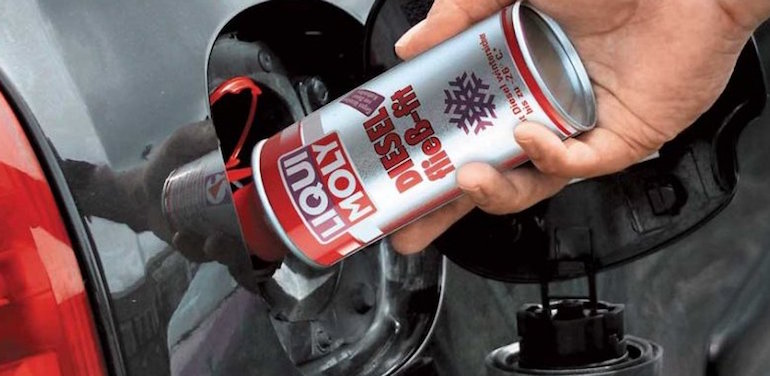
Diesel fuel additives in cold weather: an overview of manufacturers
Most drivers know that with the onset of cold weather it is necessary to switch to winter diesel fuel. What is it connected with? With the fact that ordinary diesel fuel becomes viscous and cloudy when temperatures drop to minus 15-20 degrees Celsius.
When the temperature drops to a certain limit, the paraffins that are part of the diesel fuel crystallize, the so-called "gel" is formed - small paraffin crystals that clog the filter pores. There is such a thing as the pumpability temperature of the filter. With it, the fuel thickens so much that the filter cannot pump it.
What does it lead?
Here are the main consequences:
- the entire fuel equipment system is clogged, especially the fuel pump;
- paraffins accumulate on the walls of the fuel lines;
- the injector nozzles also become blocked and lose their ability to supply the necessary portions of the fuel-air mixture to the cylinder head.
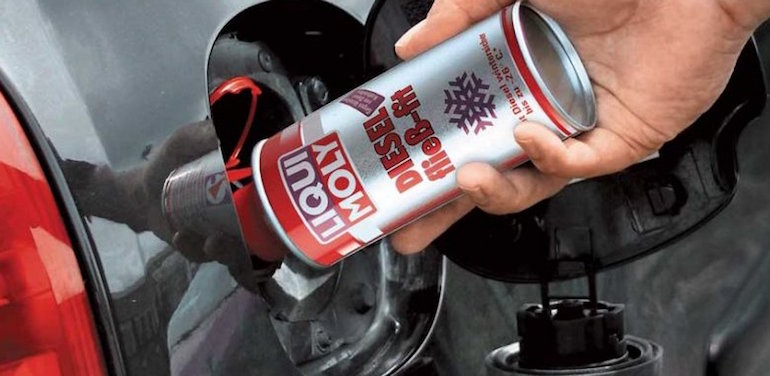
Many drivers are very well aware that cars with a diesel engine simply do not start in cold weather. You have to warm up the oil pan with a blowtorch. A good solution is the Webasto system, which we talked about on Vodi.su.
However, the simplest solution is to fill the tank with winter diesel fuel, as well as the use of additives such as anti-gel. It is also worth recalling that at many gas stations, for the sake of economy, diesel fuel is often mixed with gasoline or kerosene, which is a gross violation. If the engine of some MAZ or KamAZ is capable of withstanding such abuse of itself, then gentle foreign cars will stall immediately. Therefore, it is worth refueling only at proven gas stations, where the quality of the fuel is confirmed by the relevant certificates.
Additive selection
Let's make a reservation right away: many car manufacturers prohibit the use of any additives. Therefore, if you do not want to fork out for expensive repairs, then it is better not to experiment. Fill in exactly the type of diesel fuel recommended by the manufacturer.
In addition, many well-known automotive publications - "Top Gear" or the domestic magazine "Behind the wheel!" - conducted a lot of tests that demonstrate that the additives added to summer diesel fuel, although they help to start the car in cold weather, it is nevertheless better to buy winter diesel fuel, which is produced in accordance with various GOSTs by adding all the same additives to it.
We list the most famous antigels on the market today.
Depressant additive Hi Gear, USA. According to many motorists, one of the best deals. As the tests show, with the use of this additive, it is possible to start the engine at temperatures not lower than minus 28 degrees. At lower temperatures, diesel fuel begins to solidify and it is impossible to pump it through the filter.

In principle, this is an excellent indicator for a large territory of Russia, because frosts below 25-30 degrees are a rarity for the latitudes of Moscow, St. Petersburg or the same Yekaterinburg. The only drawback of this additive is its high cost. One bottle, as a rule, is designed for 60-70 liters, respectively, drivers of passenger cars must learn how to correctly calculate the desired proportion if the tank volume is, for example, 35-50 liters.
Diesel Fliess-Fit K - LiquiMoly diesel anti-gel. It is also an effective remedy, but it does not reach minus thirty (as stated by the manufacturer). Already at -26 degrees, diesel fuel freezes and is not pumped into the system.
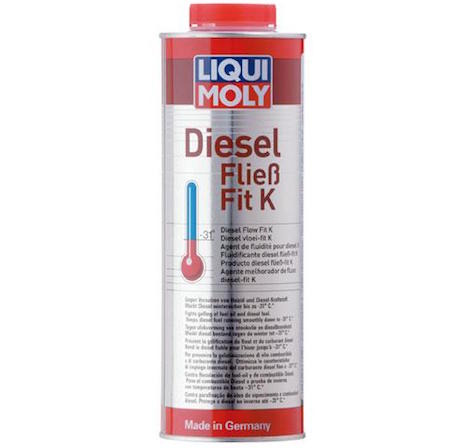
The additive is sold in a convenient container of 0,25 liters. It is easy to dose - one cap per 30 liters. At a price of about 500-600 rubles per bottle, this is a good solution. Ideal for passenger vehicles. The only problem is that in frosts of minus thirty, the anti-gel is practically useless.
STP DIESEL TREATMENT WITH ANTI GEL - pour point depressant produced in England. As tests show, only two degrees were not enough to reach the threshold value of -30 degrees. That is, if the yard is from minus one to minus 25, this additive can be used.

The editors of Vodi.su had experience using this particular anti-gel. Many drivers recommend pouring it before the onset of winter cold as a preventive measure. As you know, the cold can come abruptly and recede just as abruptly, but you will always be ready for them, especially if a long flight is expected.
AVA CAR DIESEL CONDITIONER. Another remedy from Foggy Albion. A multifunctional additive for diesel fuel, suitable for all types of vehicles and special equipment, but its efficiency is quite low - even at high concentrations, already at -20 degrees, diesel fuel begins to thicken, and it becomes problematic to start the engine. Of the advantages, one can single out convenient packaging and ease of dosage - one cap per 30 liters.
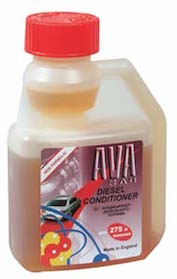
JETGO (United States) - American air conditioner for diesel with anti-gel. A fairly effective tool that provides a normal start at temperatures down to minus 28. The only problem is that it comes in a container without translation, and all measures of volume and weight are given in English.

According to the experiments, the best performance was demonstrated by domestic products:
- SPECTROL - provides start-up at temperatures up to minus 36 degrees;
- Anti-gel for diesel ASTROKHIM - with its help, you can start the engine at minus 41.
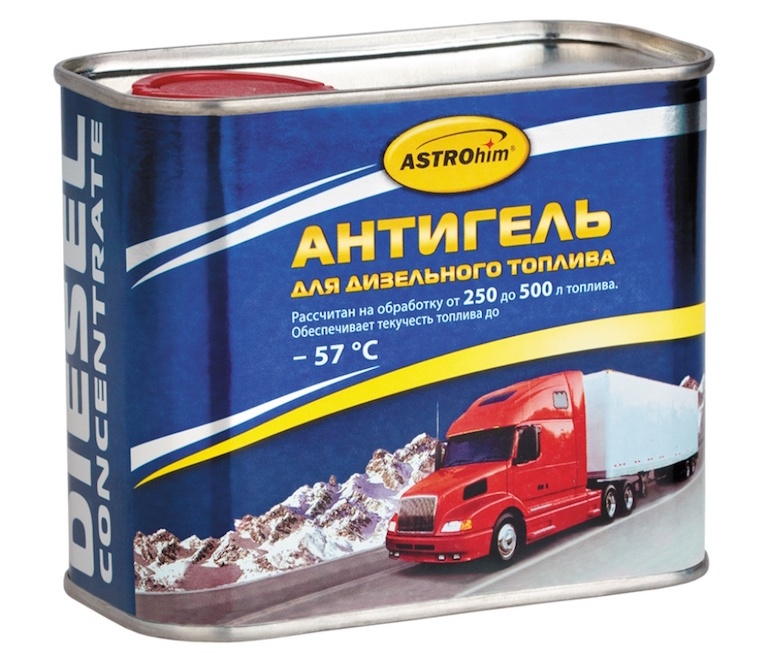
It is clear that domestic products are focused on frosty winters, which is why experts recommend buying them.
How to use additives for diesel fuel?
In order for the antigel to work, you need to fill it in correctly, following the instructions:
- first pour the additive, its temperature should not be lower than +5;
- fill in diesel fuel - thanks to this, complete mixing will occur in the tank;
- if there is a little fuel left in the tank, then we pour an additive on top of it, and then we refuel to the fullest;
- We study the instructions in detail and adhere to the proportions.
Don't forget also that there are already various innovations that help to ensure trouble-free starting, such as heated fuel filters.
Loading…
